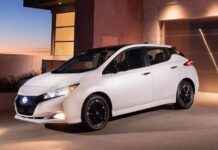Li Auto, a prominent player in the electric vehicle (EV) market in China, reported a significant drop in net profits in the second quarter of the year. The company’s profits more than halved year-on-year to RMB 1.1 billion ($151.5 million), largely due to a decrease in the average selling price of their vehicles. This decline in profitability comes as Li Auto faces fierce competition from larger rivals, particularly Huawei, in the EV sector.
Challenges in the EV Market
The competition between Li Auto and companies like Huawei has intensified in recent months as they vie for market share in China’s rapidly growing EV market. As a result, Li Auto has been forced to reassess its EV ambitions and focus on conducting more validation work to ensure the quality and competitiveness of their products. This shift in strategy reflects the challenges faced by EV startups in a market dominated by established players with significant resources and brand recognition.
Financial Performance and Market Response
Despite the drop in profits, Li Auto reported record revenue of RMB 31.7 billion in the second quarter, driven by strong sales of their extended-range hybrid EVs (EREVs). However, the company’s vehicle margin declined to 18.7% from 21% a year ago, indicating the impact of pricing pressures and increased competition on their bottom line. The market responded negatively to Li Auto’s earnings report, with U.S.-listed shares of the company falling by 16.1% following the release of the financial results.
Product Strategy and Sales Performance
One of the key factors contributing to Li Auto’s revenue growth in the second quarter was the success of their L6 crossover, the company’s cheapest model launched in April. Priced at RMB 249,800, the L6 accounted for approximately one-third of Li Auto’s quarterly deliveries of 108,581 units. However, rival Huawei announced impressive sales figures for their Harmony Intelligent Mobility Alliance, delivering a total of 106,351 EVs in the same period. Additionally, Huawei’s Aito M7 crossover emerged as the top-selling model by a young Chinese EV maker, further highlighting the fierce competition in the market.
Li Auto faces challenges not only from established rivals like Huawei but also from evolving consumer preferences and market dynamics. The company recently revised its annual delivery guidance, lowering it to 500,000 units from the previously guided 560,000 units. This adjustment reflects Li Auto’s concerns over slowing demand and pricing pressure in the highly competitive EV market in China.
As Li Auto navigates these challenges, the company remains focused on innovation and product development to stay competitive in the rapidly evolving EV landscape. By conducting more validation work and refining their product offerings, Li Auto aims to enhance the quality and performance of their vehicles to meet the changing needs of consumers and maintain a strong position in the market.

















